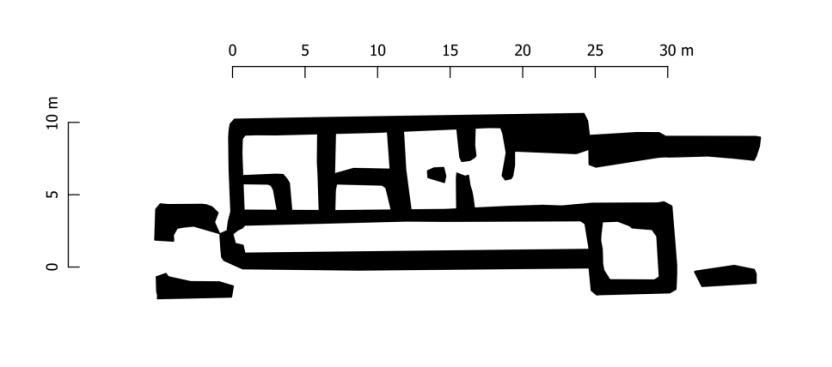Ty se tam mají
Detectorists have sparked the discovery of a unique Roman villa that is changing the way experts look at
Categories: Finds and rescue research abroad , Nálezy nejenom s detektorem ve Velké Británii a Irsku
Archaeologists from Wrexham Museum, the University of Chester and Archaeological Survey West have discovered a Roman villa near Rossett in Wrexham thanks to the reported finds of collaborating detectorists. The villa is the first of its kind ever discovered in north-east Wales and fundamentally breaks down previous assumptions about the area during the Roman period.
Local detectorists have discovered a site with a high concentration of Roman finds in a ploughed field at Rosset near Wrexham. Following their reports, the site was first investigated remotely, with aerial and lidar images revealing distinct structures in the ground. These are fairly typical forms with a series of stone and cobbled buildings surrounding a central courtyard. The remote sensing also indicated a possible association of the houses with the field system, road and other associated buildings and structures. Subsequently a surface survey was undertaken, again with the copious use of metal detectors, and Roman artefacts dating from the late 1st to early 4th century AD were recovered. The results so far suggest that the villa was in use for a long period, almost the entire period of Roman rule in Britain.
The Roman army invaded Britain in AD 43. Soon, it also occupied the north and west of the country. Around 74, a fortress was established at Chester. Eventually a network of towns and rural settlements was established. Most of the villas were mainly agricultural establishments; ranging from relatively simple in design to grand villas with mosaic floors, bathrooms and underfloor heating systems. The discovery of architectural fragments found during field excavations suggests that this villa may contain many of those features and belonged to a wealthy family.
"The exciting discovery of the villa potentially changes our understanding of the history of North East Wales in the aftermath of the Roman conquest. Previous interpretations suggest that most people in the area lived either in settlements associated with RomanRoman military garrisons or in fairly simple farmsteads that continued to use the architectural forms of the so-called "The identification of the villa now challenges this story," said Dr Caroline Pudney, Lecturer and Senior Lecturer in Archaeology at the University of Chester.
"This remarkable find only underlines the significant number of fantastic archaeological discoveries that have been madehave taken place in and around Rossett in recent years, be it the Bronze Age, from which the magnificent Burton Hoard (a unique imported hoard of gold and bronze artefacts unparalleled in Britain) or the Roman lead pig (ingot) which we currently have on display in the museum," added Hugh Jones of Wrexham Borough Council.
Wrexham Museum and the University of Chester are now planning further options for progressing exploration of the area over the next few years. It all depends on funding opportunities and the speed with which the relevant permissions can be processed. Work on the project to date has been funded by the Roman Research Trust.
Roman Nemec



Sources: bbc.com, news.wrexham.gov.uk, irandailyonline.ir
The article is included in categories:



